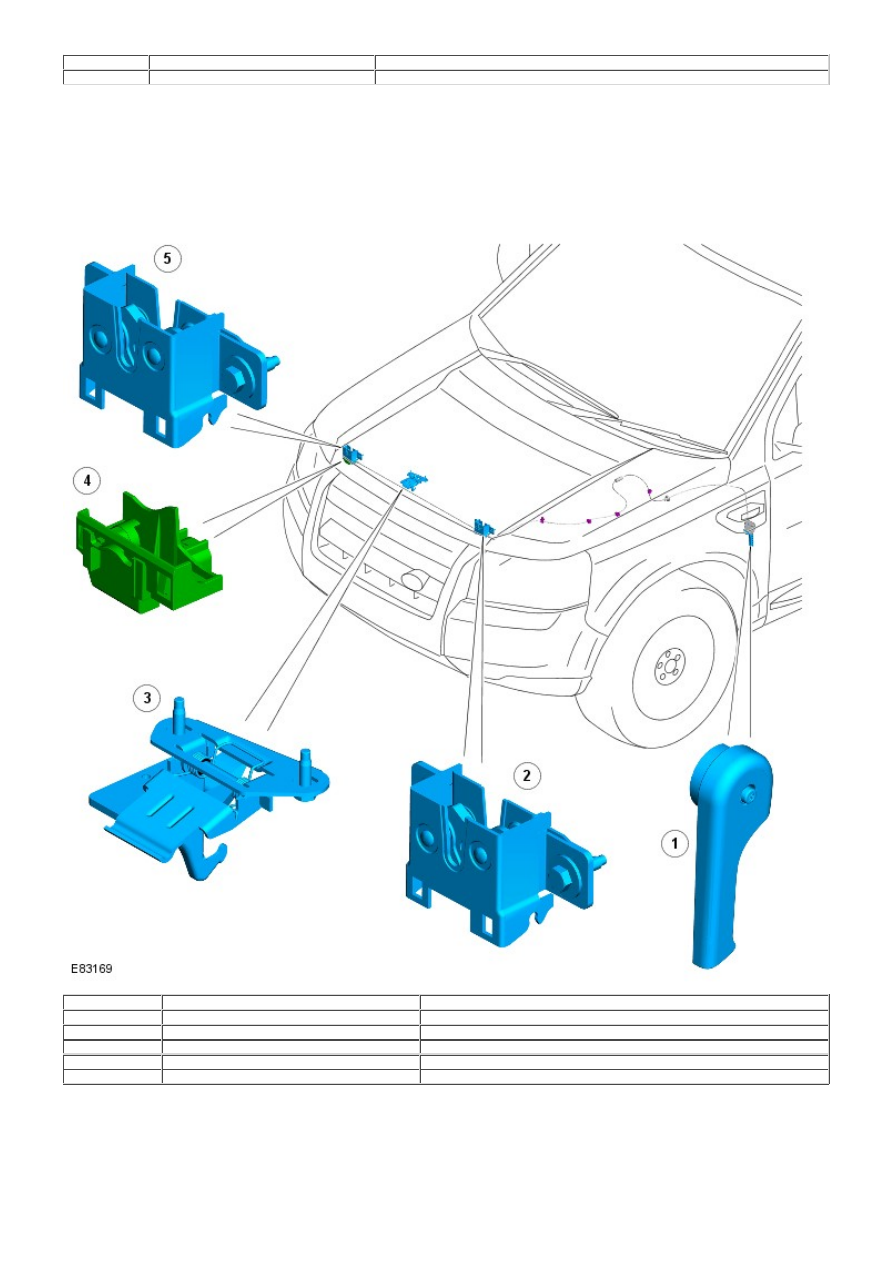Frelander 2. Manual - part 578

2
-
Emergency key blade
3
-
LH front door handle
The remote handset contains an emergency key blade, concealed in the key fob. The front LH exterior door handle
incorporates a mechanical operated door lock that is concealed behind a removable plastic cover. The door lock allows the
front LH door to be mechanically unlocked and locked using the emergency key blade in the event that the remote central
locking operation fails, or a vehicle power failure occurs.
When the mechanical door lock is used the central locking system will not operate, and if already armed the vehicle alarm
will sound when the door is opened. The vehicle is not able to be double locked, or the alarm system armed using the
emergency key blade.
HOOD LATCHES
Item
Part Number
Description
1
-
Hood release handle
2
-
LH hood latch
3
-
Hood safety hook
4
-
Hood ajar switch
5
-
RH hood latch
The hood is secured in the closed position by 2 latches located on each side of the hood latch panel. The hood release lever
is located below the instrument panel on the LH 'A' pillar and is connected with a cable to the hood latches. Operation of the
hood release lever will open the 2 hood latches and release the hood.
A mechanically operated safety hook is installed at the front center of the hood. The safety hook prevents the hood from
fully opening in the event that the hood latches are open, and the vehicle is in motion. The safety hook is spring operated
to bias the hook to the latched position, and is formed with a lever plate. The lever must be pressed to release the safety
hook from the mating latch plate when the hood is to be fully opened.